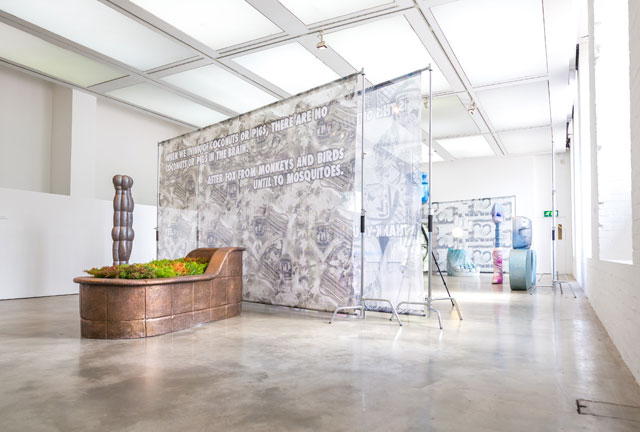

by ANNA McNAY
Guan Xiao (b1983, Chongqing) works mainly in sculpture and video, exploring how ways of seeing are now influenced by the increasing dominance of digital imagery as a source of information. One of the artists championed by the K11 Art Foundation (KAF), Guan recently had a solo show, Flattened Metal, at the ICA, London, which was the second collaboration between the two institutions. The exhibition is to move to the K11 Art Museum, Shanghai, this autumn.
Juxtaposing references from the past, present and future, and weaving visual, audio and textual material together, Guan explores the notion of conversion: “the different ways our inner selves get in touch with the world outside, and the possibilities that objects disintegrate objects (to construct indescribable nothingness)”. She spoke to Studio International via email from China, shortly after the birth of her first child.
Anna McNay: You work mainly with sculpture and video and the digital image. What is your artistic training? You studied directing, not fine art, but did you ever have lessons in drawing or painting or anything more traditional?
Guan Xiao: Yes, I studied painting before I went to university. In fact, back then, I was also admitted to the department of painting at Sichuan Fine Arts Institute.
AMc: How has the internet and the digital – or virtual – revolution affected contemporary art and artists?
GX: I believe changes in one’s habits of seeing/perceiving can have great effects, and this extends to the arts. These changes can bring about interesting debate and negative influences at the same time.
AMc: What would you say is the key preoccupation of your work?
GX: Conversion: the different ways our inner selves get in touch with the world outside, and the possibilities that objects disintegrate objects (to construct indescribable nothingness).
AMc: Where do you find inspiration?
GX: Everywhere. Online and offline. My favourite moments are when ideas pop up out of the blue while I am doing some every day action such as chatting or looking.
AMc: What role does time play in your work?
GX: To me, it serves as a unit of measurement, just like metres and centimetres.
AMc: What about humour? How important is that for you in your work?
GX: I am learning about humour. It is a precious quality, and I am working on it.
AMc: How can text enrich a visual work of art? Does this not detract from the essence of its being an aesthetic object? Or is this not how you would define art?
GX: I believe, if you observe Lawrence Weiner’s work, his creations are more convincing than mine in this regard. He calls himself a sculptor. How do you see poetry? Don’t you think poetry embodies something aesthetic? You can’t say text detracts from the essence. This is too simple and lopsided. Text is only one of the many materials, just like paint, clay or readymade objects.
AMc: You’ve said before that you think, as artists, you are “simply looking for ways to modify the world”. If you had a superpower for a day, what would it be, and what would you change first about the world?
GX: To change the notion of “changing the world”.
AMc: How do your sculptures and your video works relate to one another? In your recent exhibition at the ICA, the installation seemed to come together as almost one large work, comprising the smaller components. Do you create your works as part of something larger or does each one have a life and soul of its own?
GX: They don’t connect directly or one-to-one. Specifically, they come from two seemingly opposite creative processes, which join together and achieve balance. I don’t really pay attention to whether there is a bigger whole, or if it will become an independent subject. The works are like every existence in the world, being an independent subject and a part of the whole at the same time.
AMc: I’ve read that you hate being pigeonholed as a Chinese artist and asked about your identity and background. Do you really feel that this is insignificant to who you are and the art that you make?
GX: I don’t hate it, really. I’m just not interested in this way of labelling others based on identities. To me, “who I am” is totally not related to my nationality, and I cannot answer you with a specific background or identity. These are not the direction or contents of my artistic work.
AMc: To risk some more pigeonholing, does being a woman make it more difficult for you to succeed as an artist?
GX: What makes me curious is, why would you think this way? Why would you ask such questions? Would you think success is more plausible for male artists? And, more specifically, why do people think that it is easier being a male artist than it is a female artist?
AMc: You recently gave birth to your first child, but that doesn’t seem to have slowed you down at all. Did you keep working throughout?
GX: I’ve been working on different tasks at different times. But, in fact, I am just arranging my schedule like normal, I rest when I need to – after all, that is more important than working.
AMc: You are currently showing work in Paris, at Jeu de Paume, as part of an exhibition, Our Ocean, Your Horizon, curated by Heidi Ballet. Can you tell me a bit about the works you have on show there?
GX: This exhibition includes a sound installation and a video work, produced in collaboration with Heidi. The video work was made specially for this project. It also consists of a publication. The exhibition title, Our Ocean, Your Horizon, was inspired by changing identities and the sea. The whole idea behind these two pieces is too long and complex to explain in a brief interview. The sound creation, How To Disappear, can be seen as the foreword to this exhibition. The video installation, Weather Forecast, is my response to the curator’s concept, discussing the varied possibilities of conversion in paralleled paragraphic structure. If you are interested, you can read the detailed conversation between Heidi and myself in the book.
AMc: What are you working on next?
GX: I’m working on quite a lot of things at the moment. I will be releasing more new videos, sculptures and installations.
• Our Ocean, Your Horizon is showing at Jeu de Paume, Paris, until 15 January 2017
• Flattened Metal, a collaboration between K11 Art Foundation and the ICA, London, will open at the K11 Art Museum, Shanghai, on 25 October 2016.
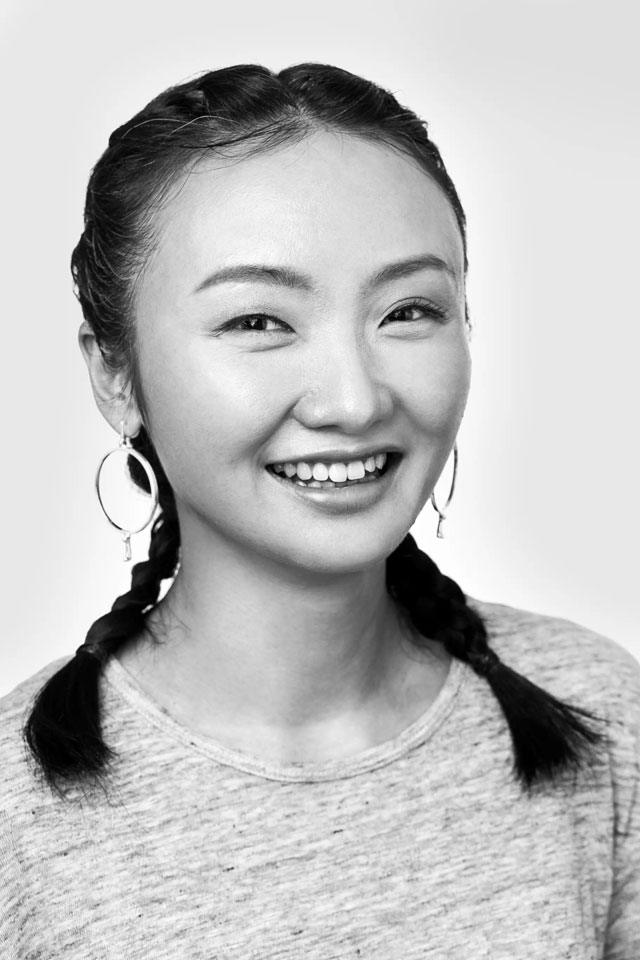
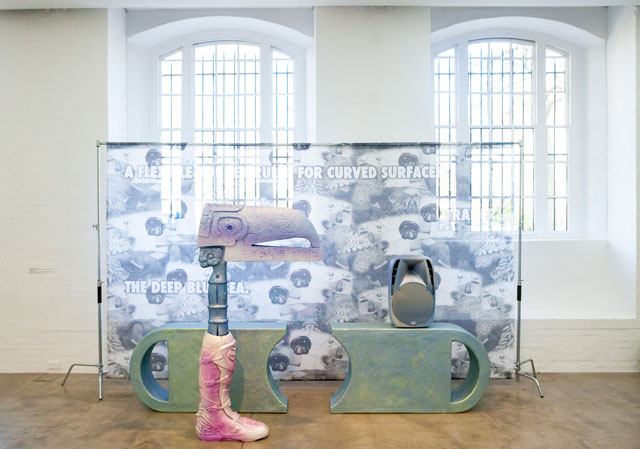
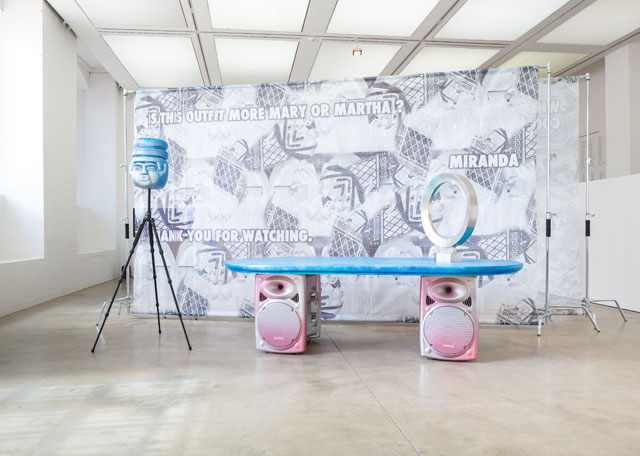
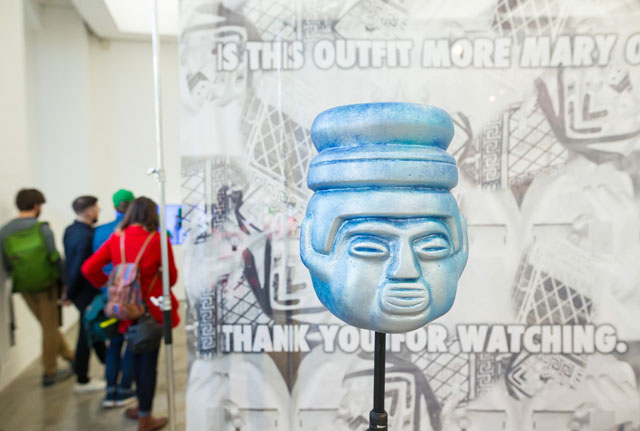
.jpg)
,Three-channel-video,-color,-sound,-12.jpg)
